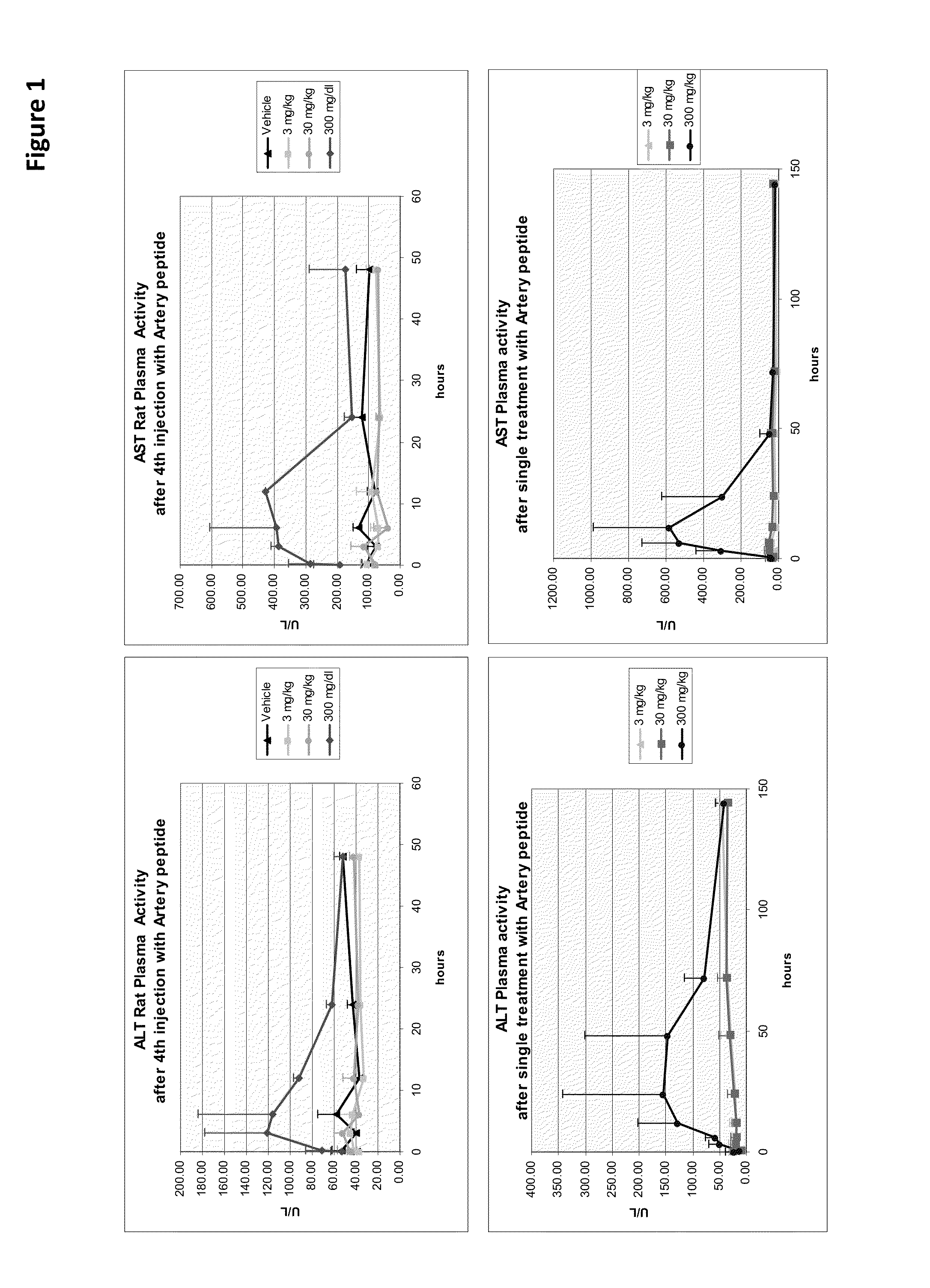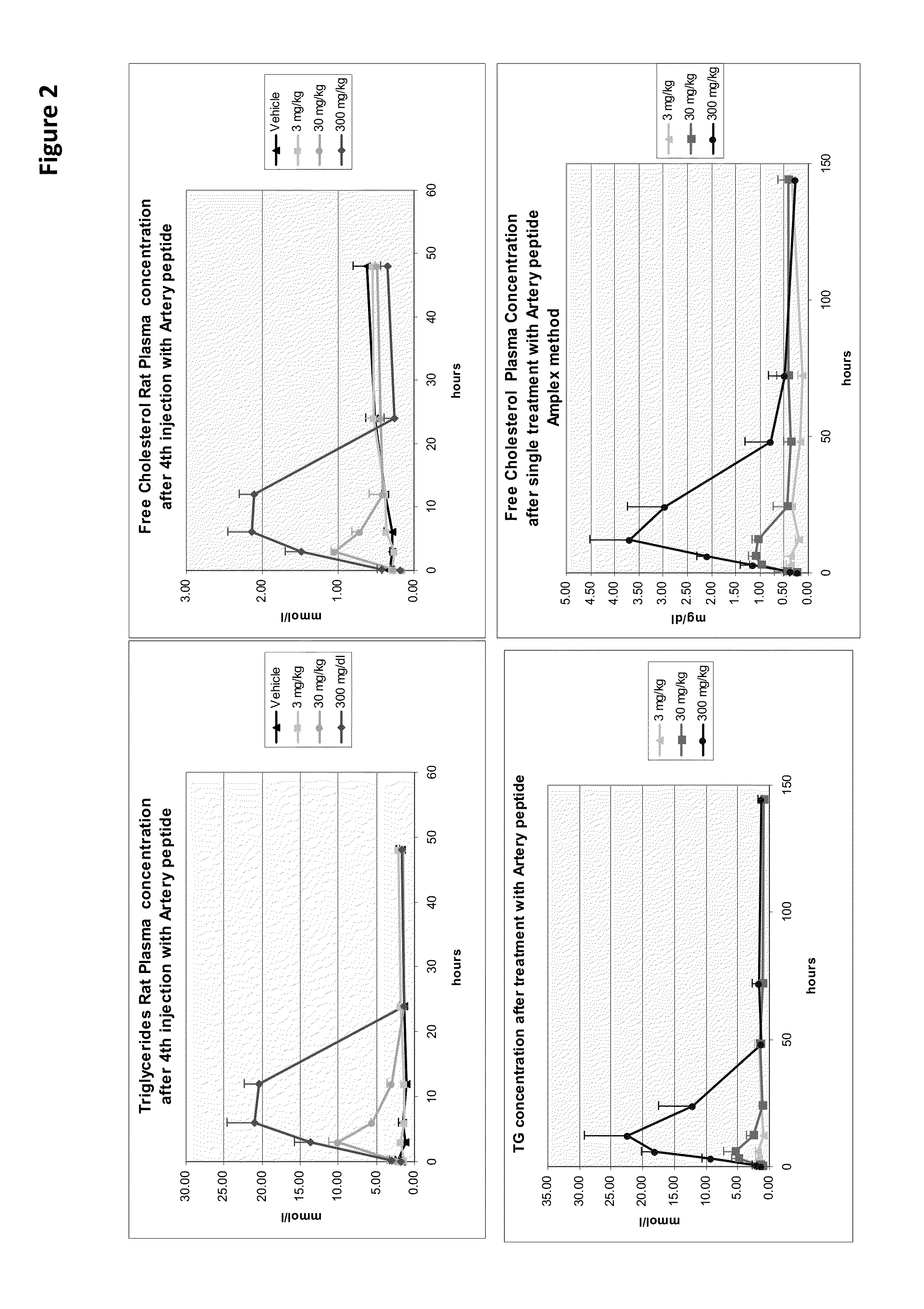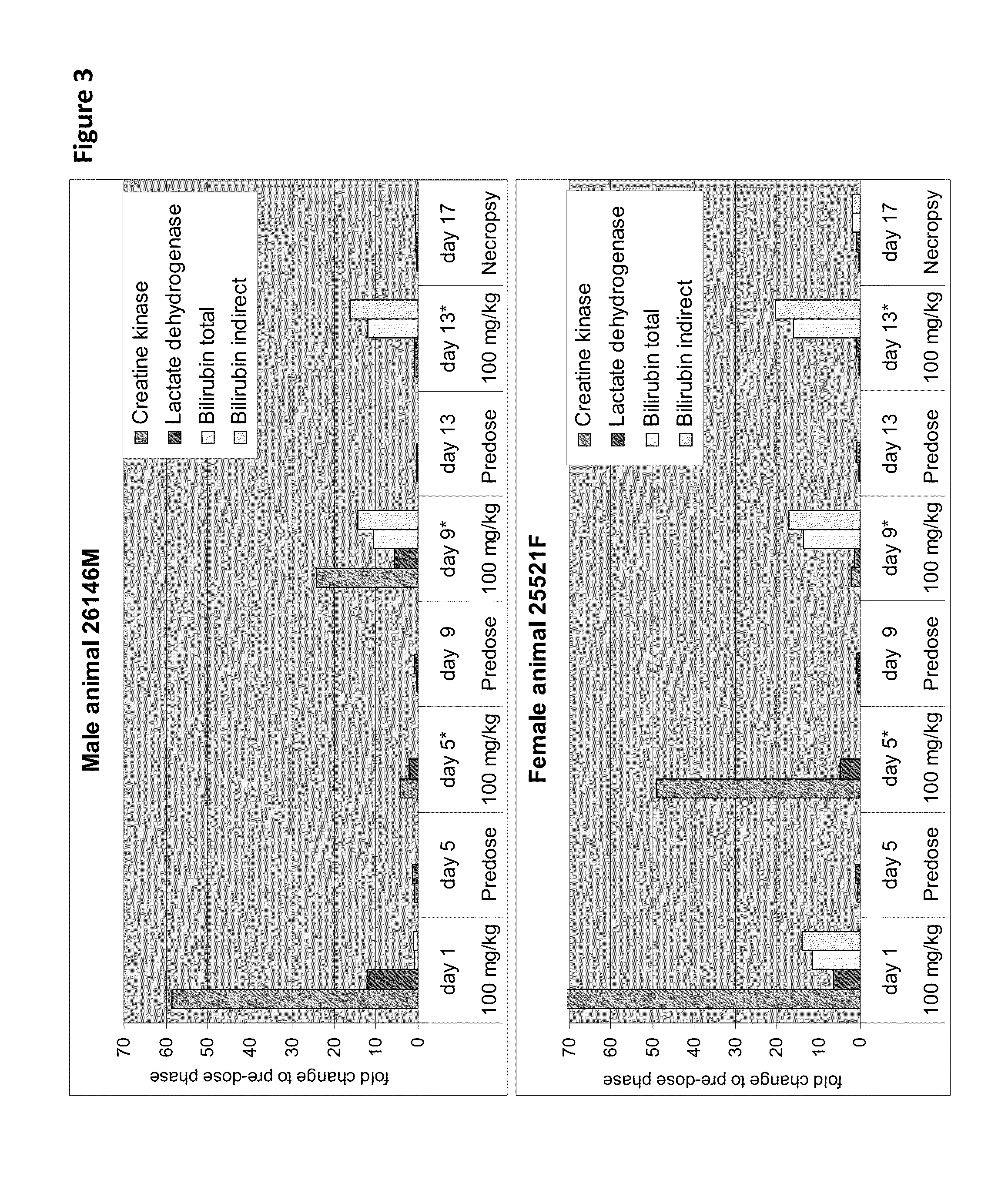Peptides having reduced toxicity that stimulate cholesterol efflux
a peptide and efflux technology, applied in the direction of peptide/protein ingredients, peptide sources,metabolism disorders, etc., can solve the problems of high pharmacological doses of peptides, and achieve the desirable cytotoxicity profile, high selectivity, and little or no cytotoxicity
- Summary
- Abstract
- Description
- Claims
- Application Information
AI Technical Summary
Benefits of technology
Problems solved by technology
Method used
Image
Examples
example 1
[0253]This example shows toxicity of a peptide ATI-5261 when the peptide was administered at high doses.
[0254]Cytotoxicity of an HDL mimetic peptide ATI-5261 at high doses was evaluated in rats and rabbits (FIG. 1). Male chow-fed Wistar rats (Panels A and B) were intravenously (IV) administered peptide ATI-5261 (lipid-free) at doses of 3, 30 and 300 mg / kg or vehicle alone at 48 h intervals for a total of 4 injections. Blood was collected for assessment of plasma alanine aminotransferase (ALT, panel A) and aspartate aminotransferase (AST, panel B) activities at the indicated times. Male New Zealand White rabbits (Panels C and D) fed standard chow were administered a single IV bolus injection of 3, 30 or 300 mg / kg ATI-5261, and blood subsequently collected for assessment of ALT (panel C) and AST (panel D). Values are means±SD, n=5 animals per group, with duplicate determinations made for rats at 0.2-24 h. The results showed that high-dose administration induced a cytotoxic response in...
example 2
[0258]This example illustrates that aromatic phenylalanine residues associated with the non-polar surface of ATI-5261 contributed to the majority of the peptide toxicity (FIG. 5). Analogs of ATI-5261 with aliphatic leucine (L) were created to evaluate toxicity (FIG. 5). Variants of ATI-5261 with aliphatic leucine (L) systematically used (sequence list Panel A) to replace phenylalanine (F) were injected IP into male chow-fed C57Bl / 6 mice. Blood was collected via retro-orbital plexus 4 h after injection for isolation of plasma. Levels of plasma CPK (Panel A), ALT (panel B) and AST (Panel C) were determined as described in FIG. 1. Values are means±SD, n=4 mice per group. Inset in panel A shows residual toxicity associated with the all aliphatic analog lacking phenylalanine residues T5055-13, i.e. zero or no F) vs. vehicle alone (PBS control).
[0259]The concentrations of plasma lipids in C57Bl / 6 mice following administration of the aliphatic analogs of ATI-5261 was also determined FIG. 6...
example 3
[0261]To test whether the cytotoxic response of ATI-5261 was preferentially linked to arginine or lysine residues, peptide analogs of ATI-5261 with lysine eliminations or R>K substitutions were created and evaluated in mice (FIG. 8). Panel A-Safety and TG elevating effects were evaluated by injecting (IP) peptides (300 mg / kg) into male, chow-fed C57Bl / 6 mice, as described in FIG. 5. Values are means SD, n=4. Removal of lysine25 (K25) from C-terminal end of ATI-5261, by either ablation (T5766-5) or amino acid substitution (K25->N, T5594-4) greatly reduced muscle toxicity as judged by decreased CPK activity in plasma (left panel), suggesting lysine residues promote toxicity. Peptides with all lysine residues (i.e. R>K substitutions, T5594-5) also displayed cytotoxic and TG elevating activity, consistent with a role of either lysine or arginine in mediating negative effects of the peptides. Panel B-ABCA1-dependent cholesterol efflux activity of peptides determined using J774 macrophage...
PUM
| Property | Measurement | Unit |
|---|---|---|
| half life | aaaaa | aaaaa |
| dihedral angle | aaaaa | aaaaa |
| concentrations | aaaaa | aaaaa |
Abstract
Description
Claims
Application Information
 Login to View More
Login to View More - R&D
- Intellectual Property
- Life Sciences
- Materials
- Tech Scout
- Unparalleled Data Quality
- Higher Quality Content
- 60% Fewer Hallucinations
Browse by: Latest US Patents, China's latest patents, Technical Efficacy Thesaurus, Application Domain, Technology Topic, Popular Technical Reports.
© 2025 PatSnap. All rights reserved.Legal|Privacy policy|Modern Slavery Act Transparency Statement|Sitemap|About US| Contact US: help@patsnap.com



